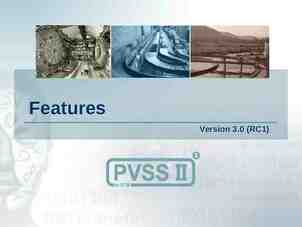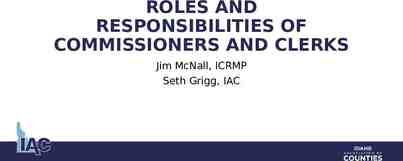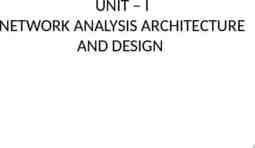Colorado Health Information Exchange Inter-institutional Data Sharing,
12 Slides2.47 MB

Colorado Health Information Exchange Inter-institutional Data Sharing, Standards and Legal Arthur Davidson, MD, MSPH Agency for Healthcare Research and Quality, Washington, DC June 9, 2005 Funded in part through a contract with Agency for Health Care Research and Quality (AHRQ), and the Foundation for eHealth Initiative (FeHI) and their cooperative agreement with HRSA, Office for the Advancement for Telehealth (OAT). The contents of this presentation are solely the responsibility of the author and do not necessarily represent the official view of AHRQ, HRSA/OAT or FeHI.

Colorado Health Information Exchange 2 Complementary Initiatives Goal: Create a local health information infrastructure for clinicians to access patient information across individual health care institutions Build upon what exists Denver Health (DH) Kaiser Permanente of Colorado (KPC) 3rd largest CO HMO (350,000 members) The Children’s Hospital (TCH) 150,000 residents (25% of population) Largest pediatric specialty care provider University of Colorado Hospital (UCH) Largest Metro area teaching hospital

COHIE to CORHIO PROJECT (10/2004) Steering Committee Working groups: COHIE Learning Laboratory Technical Clinical Evaluation Legal Organizational Community Advisory Council VISION Colorado Regional Health Information Organization (10/2009) A sharing, self-sustaining non-profit structure that: Promotes legal agreements for participation and access Maintains a robust technical environment Defines clinical value through policy and procedures Manages the budget and sustainable business model Supports national standards and public health interfaces

COHIE: 2005 plan

RHIO: 2005 vision Organizing / Convening Entity Organizational / Governance Layer InterEnterprise Utility Services Participating Entity Record Locator (MPI) Customer / User Portal Network Transport InterEnterprise Business Services Internal Operations Layer Financing Entity Operational / Project Sub-committee Operating Entity Operational / Project Sub-committee Privacy / Security Authorization Hosted Routing Services Message Translation Adapter Hospital Adapter Information Message Handling Standard Software Applications / Services / Tools Adapter Physician Office Payer Claims Adapter Practice System Management System Adapter System Electronic Adapter Medical Record (EMR) System Message or Other Storage Call Center Leased Private Network Internet Adapter Message Standards Validation Lab,/ Diagnostic Adapter Imaging / Ancillary System Process- / Adapter Data Content-Specific Applications Adapter Public Health / Disease Surveillance System Pharmacy / Adapter PBM System

The “Primary” Scenario Colorado Health Information Exchange (COHIE): Scenario (Use Case), draft 12/22/04 - AD Clarifies the scope (common understanding) Provides a structure to focus meetings and discussion Creates a mechanism for logging issues and decisions SCENARIO ASSUMPTION (USE CASE Pre-condition): 4 year old boy with history of prior seizures. Born prematurely at University of Colorado Hospital (UCH) with prolonged stay in NICU 1 year ago had first seizure while a Kaiser (KP) patient. Evaluated with CT scan, EEG and neurologist visit. Started on unknown medication at that time. Patient lost health insurance coverage, transferred care to Denver Health (DH) outpatient clinic about 6 months ago. Seen at Westwood Family Health Center for blood test and change in medication about 3 days ago Desired information: medication used drug level EEG results CT scan results newborn, neurology and primary care exam findings and diagnosis name/institution/contact method for treating MDs The Children's Hospital (1) a) Patient seizes, taken to The Children's Hospital (TCH) Emergency Department (ED) START SCENARIO b) Patient registration and routine informed consent which includes permision to electronically query for matching patients across COHIE partners. Patient may "opt out". ED Physician provides treatment with limited medical history from parent/patient may require additional (and potentially unnecssary ) blood tests, radiologic tests NO c) Consent given? d) ED Physician uniquely identified / authenticated on the COHIE system e) ED Physician securely reviews list of potential matches, confirms a true match and sends message to COHIE COHIE (2) YES a) Secure TCH registration system message received at COHIE; seek potential matches in unified master patient index (UMPI); unique UMPI identifier created; patient's consent stored centrally with TCH identifier b) COHIE UMPI sends a secure message to participating partners seeking any potential matches to this patient. c) Potential matches merged and prepared as one COHIE web page for viewing at TCH Partner Institutions (3) a) Secure message from COHIE received by participating partners (DH, KP, UCH) requesting potential matches . b) Potential matches identified and message returned to COHIE from each partner. d) COHIE UMPI stores match with linking (TCH, DH, KP, UCH) identifiers f) Secure COHIE message received by TCH requesting clinical data e) COHIE sends secure data request to retrieve patient clinical information c) Secure COHIE message received by DH, KP/UCH requesting clinical data g) Clinical repository data identified and message prepared for COHIE from TCH. f) COHIE receives all laboratory, radiology, pharmacy and clinical consultation Information from participating partners;organizes and presents health history in web page for viewing at TCH. d) Clinical repository data identified and message prepared for COHIE from DH/ KP/UCH. h) ED Physician securely reviews clinical data in browser window END SCENARIO i) ED Physician uses all health information to provide best, cost effective, treatment for patient. g) COHIE maintains a complete audit log: who accessed the system, when, what information was shared, and its source

COHIE Working Groups Iterative reviews COMPONENTS Legal Clinical Technical Research/Evaluation

Timeline – October 2005 MPI prototype, record locater service (RLS) Data sharing agreement: based on IN avoids multiple BAA no research references Incidental disclosures: CFH Policy Group Design modification: ? near 100% match for disclosure (high threshold to start), role-based threshold (ED vs. referral MD), challenge to business case Minimum certainty before RLS returns demographic information to the requester Minimum number of required demographic fields supplied by the requester before the RLS returns demographic information.

Timeline – October 2006 Proxy servers with standardized data Laboratory (LOINC, SNOMED encoded) ICD-9 billing diagnoses HL7 messaging V2.x for MPI queries to/from institutional MPI V3.0 for clinical data Future: (after 10/06) Arden syntax/GLIF for guideline implementation on aggregated data

CORHIO Process Colorado Health Institute (neutral convener) Legal support Explore/define relationship COHIE CORHIO Working Group Business plan Articles of incorporation (501c3) Defining the board Education/public relations Community Advisory Council (greater than 40 members, most HIT projects going on in Colorado

CORHIO Candidate Partners







